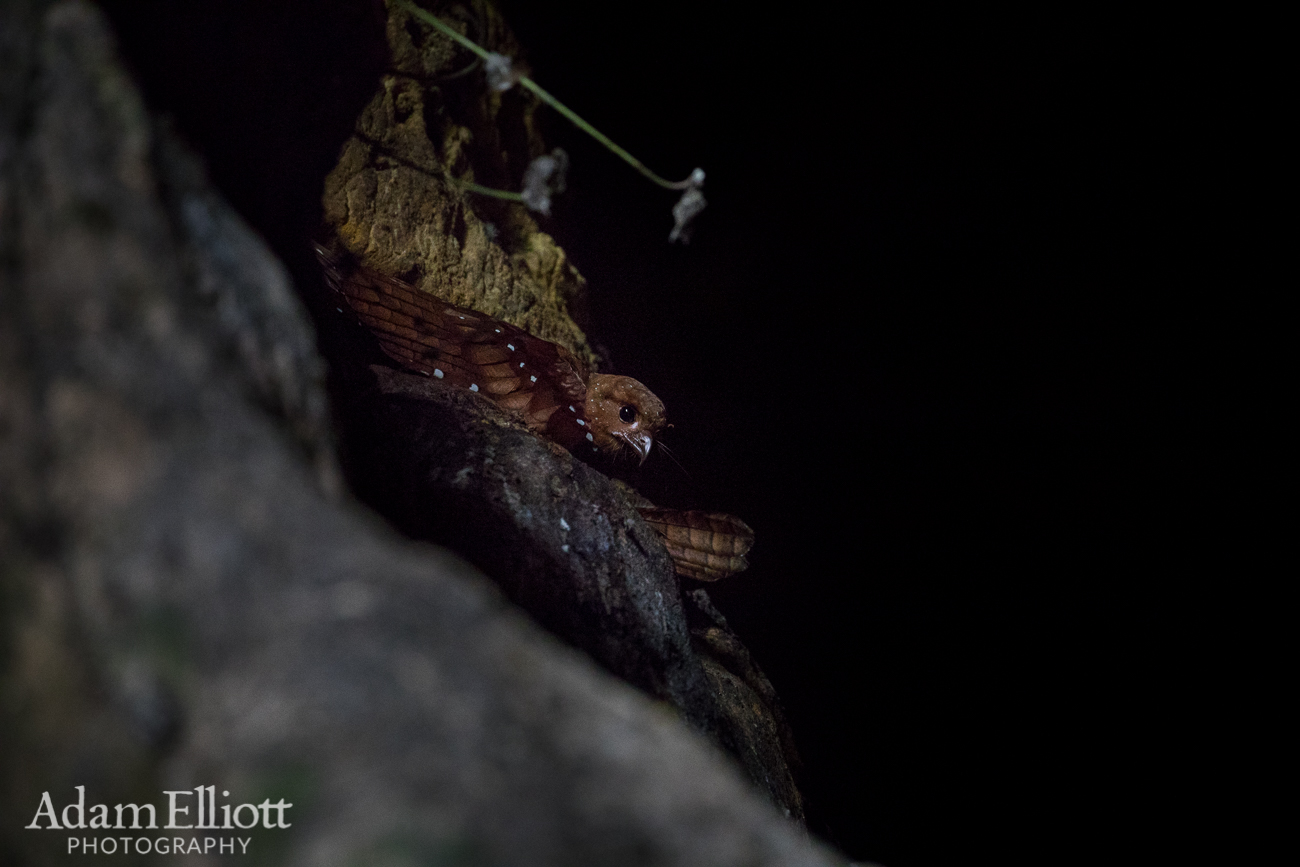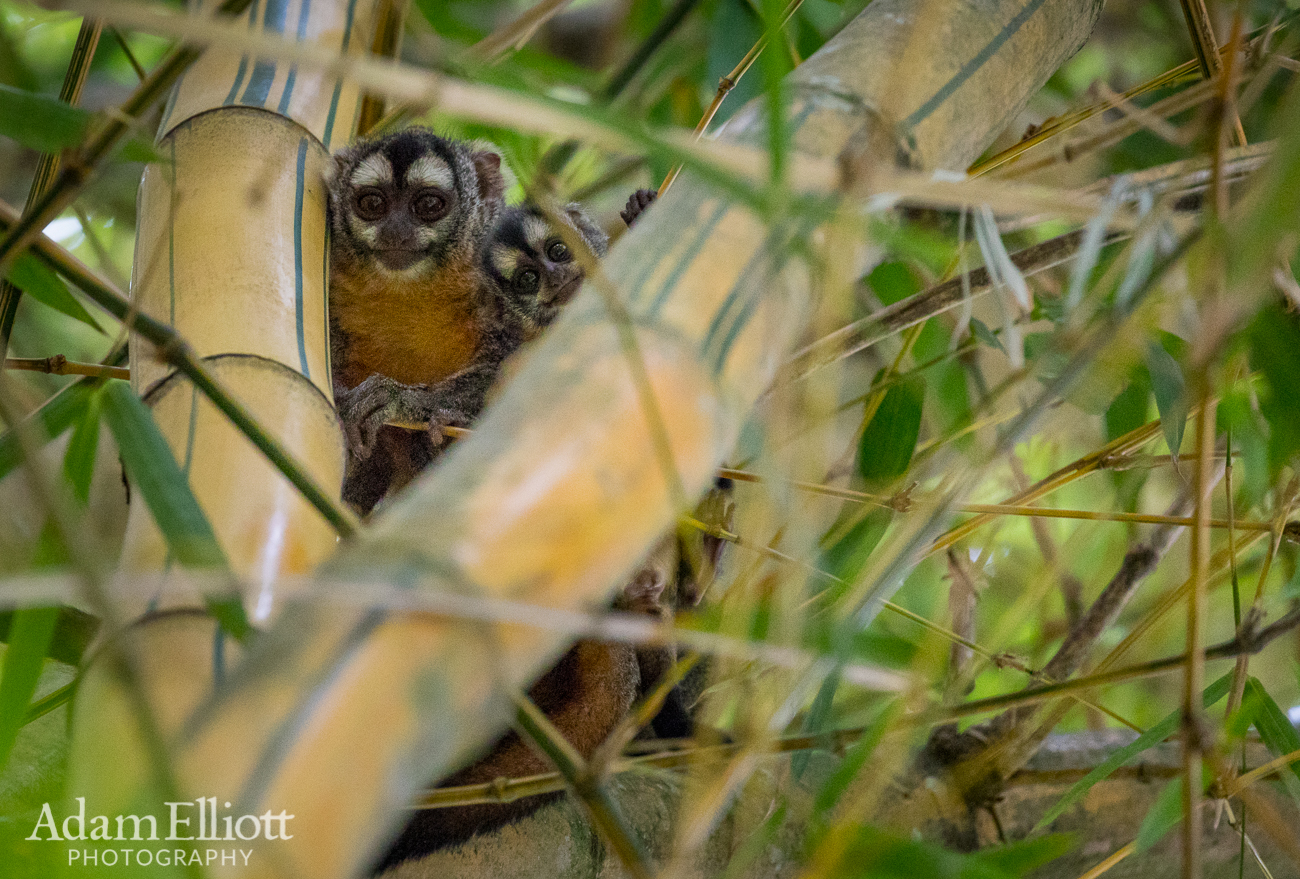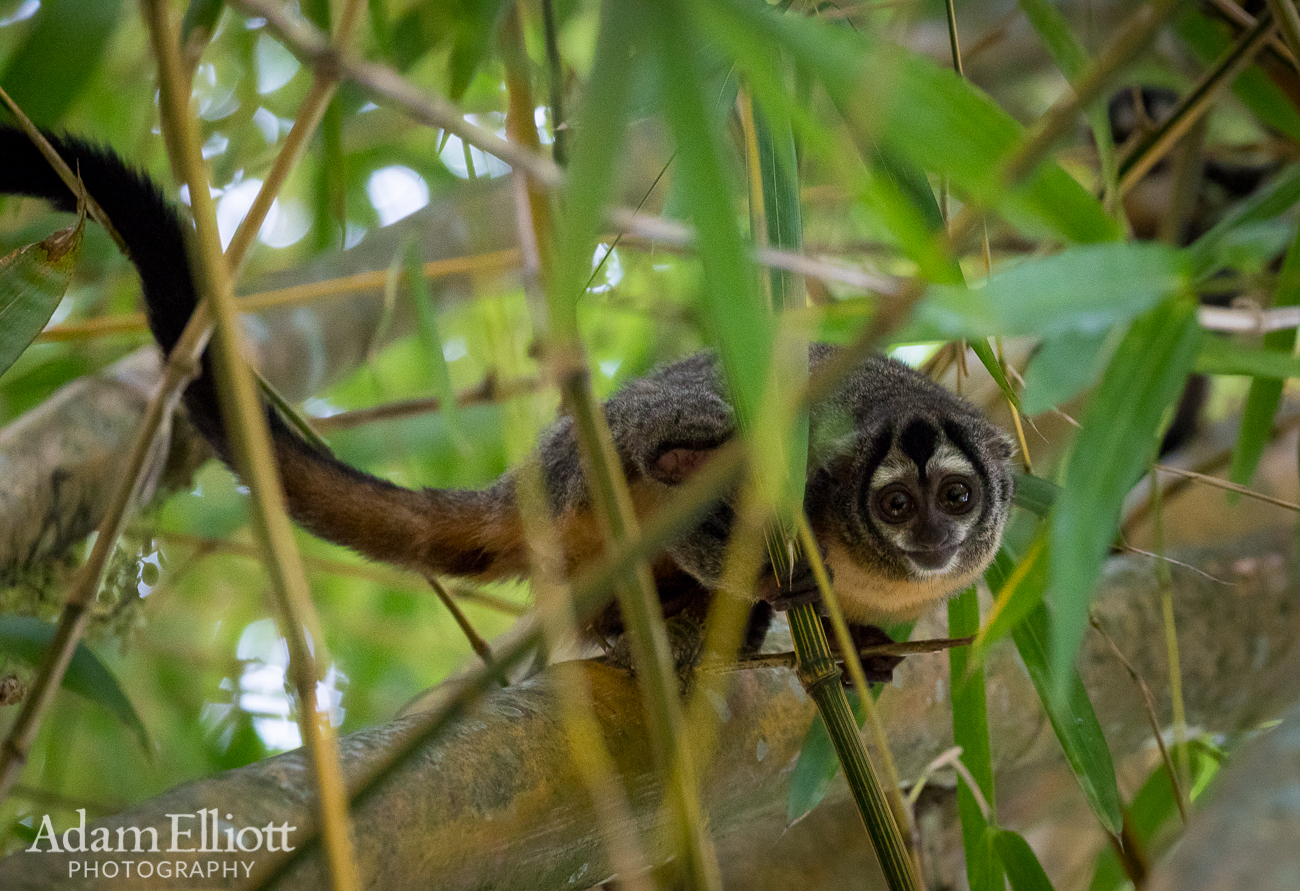Our last two nights were spent in the Amazon Jungle. As we made the drive from the highlands of Cochabamba down to Villa Tunari we once again drove down incredibly deep, steep sided jungle valleys filled with countless waterfalls, cliffs, rivers and tunnels. This time the road was paved but it was still so clogged with dangerous truck traffic and so narrow that we didn’t want to stop for pictures. The transition from brown grassy hills to moist green jungle canopy was so rapid it was like driving from Idaho in winter to Hawaii in 10 miles. Again, we descended deeply to narrow valleys only to find those were mid level valleys high above the final jungle floor. As we drove lower and lower the Suzuki began to perform better and better. Where at 14,000 feet we had to use almost first gear to pass another vehicle now 5th gear was working for the first time in weeks! From the high point that day on the highway to the low point we descended from 12,150 ft(3,703m) all the way down to 950 feet (290 meters). My lungs sucked up the oxygen and my skin sucked up the moisture in the air.

The Andes diminished. The valleys flattened. In a few miles the mountains ended altogether. From that point on the rivers (and there were many) meander more than 2,000 miles (3,219 km) to the Atlantic, joining the very distant Amazon River along the way, across land often no more than 200 feet above sea level.

It was not sunset but all the smoke in the air made it look that way, whether or not it was from slash and burn of the jungle or cooking in wood stoves.

Unable to enter the park we decided to explore one of the nearby tributaries.

A swimming hole with some small waterfalls farther off.

The larger river was full of a huge variety of rock types in the form of large rounded boulders. An Explorer could penetrate deep into the continent following such shorelines.



An overgrown cemetery. There were many of these, constantly threatened with additional burial by jungle.


Hotel Los Tucanes. We did not see any Toucans but there were a ton of cool birds around. There were a lot of bugs inside the rooms. There were a lot of bugs outside the rooms. There was an Amazon-Size cockroach I could not kill despite crushing it in a chaotic frenzy about 6 different times. Eventually the cockroach climbed halfway down the shower wall and stared at me while I bathed.
It was the most straightforward, and seemingly shortest day of driving since the first day of our trip. We stopped in Villa Tunari, a depressing tropical village between two rivers, and without any reservations drove around checking out several hotel options. The selection was poor. We settled on Hotel Los Tucanes for it’s somewhat pleasant grounds, it’s pool and spaced out rooms. I wouldn’t say the food was great but i’m sure it was as good as almost anywhere in town and was a convenient walk from our room.
Villa Tunari is a stepping off point for a couple of national parks in the region and is infamous for being the site of a massacre in 1988 between government troops and coca farmers. The issues with coca farming for the drug trade are ever present and a cause of continuous conflict in the area. One of the parks is Carrasco National Park. I was attracted to it during the very little research I did because of some cool looking “Oil Birds” and the possibility of going into a jungle cave.

We returned to the river, this time with a guide. In the center on the far side of the river you can see the two concrete foundation for the cable carts.


The park entrance. On the right is a pile of stones used to keep tension in the cable so the hand pulled cart can make it over the river. That piece of sheet metal is the final perfect weight.

The rivers were still fresh from the mountain highlands.

Inside the official park at last.

This was a totally crazy tripod tree that was fairly common.

The tree initially grows as a single stalk and then after a year or two sends down these flabby fleshy phallic probes. When they touch the ground they straighten and stiffen. At least that’s what our teenage guide told us….


A jungle cave. It looks tiny but it’s tall enough to stand up in.

It’s a bat cave!

This one was screaming at me but I couldn’t hear it.

There were a lot of good sized bats and they were flying all around us.

Exiting the cave involved crossing a tilted log over a small slot. It reminded me of the entrance of Tumbling Rock cave in Alabama.

After the first cave we wound along the base of a stone hill covered in lush foliage.

The second cave was an impressive chasm. It had the stench of guano.

For print and purchase options
On the highest dark ledges the Oilbirds roost. So why do i think Oilbirds are so cool? They use echo location to fly around in the depths of the caves where they roost. But they use it at human audible frequencies, emitting horrific shrieks and clicks constantly, as if you yourself were trying to get around in a cave without a flashlight. They have cool reflective patterns on their feathers that are reminiscent of deep sea creatures. They have sensory whiskers around their beaks. AND when it comes to gathering light, their eyes are the best of all vertebrates, with 1 million rods per millimeter.

I spent so much time cracking my neck behind iron bars to try and get pictures of really high up oilbirds in the dark that I forgot these guys were standing behind me.

These were incredibly cool insects like grasshoppers. They jumped faster than you could see but then opened white wings and glided to the ground like a helicopters.
We spent what was left of the first day looking for a way to get into the park. We found an entrance on a cliff above a river but no bridge to cross the river. There was a cage on the other side on a metal cable but you needed a special tool to pull it over. We found out you aren’t even supposed to go over there without a guide, so we instead explored one of the other nearby rivers until we ran out of light.
The next morning we signed up for the cave tour. Our guide was a teenager. Entering the park one of the first things we noticed were villagers who had illegally built houses in the park, only a short distance from the trail. National Parks in Bolivia are not protected or respected the way they are in developed countries. Carrasco is plagued with many serious problems including illegal homes, coca agriculture for the drug trade, illegal logging of mahogany trees and oil drilling. The farmers are armed. There’s even the possibility you could be killed by cavemen in the form of an uncontacted indigenous tribe deep in the jungle.
I was generally happy with the guided trip. We were the only people, the guide was pleasant and gave us time when we wanted it. I feel like, because of the monotony of jungle hiking, that if you aren’t seeing a lot of wildlife then you need a destination, and the caves were good enough for that. The short mile or so walk introduced me to a number of interesting new plants and trees I had never heard of, some cool insects and bird songs, and a whole lot of vibrant blue Morpho Butterflies. I never got a picture of them because they dart in and out of the thick foliage so randomly, but they are one of the largest butterflies in the world and their extremely vibrant blue color is from mechanical structures, not pigment!
I was disappointed at how little wildlife we saw but coincidentally that night a group of primates showed up on the hotel grounds not far from our room.

For print and purchase options
This is possibly a Black Headed Night Monkey but more likely Azara’s Night Monkey. Also known as the Owl Monkey, these guys are the only nocturnal monkeys. I was extremely lucky to get pictures of them before it was completely dark.

For print and purchase options
There were even a few babies! The monkeys just happened to be passing through the hotel grounds, sleeping a few nights in a tall grove of bamboo. According to our host they might stay a week or two before moving on, possibly being forced to cross the endlessly busy highway, but maybe taking advantage of a nearby bridge to pass under the traffic.

That afternoon we went to checkout this huge suspension bridge we kept seeing from the highway.


The old cable bridge foundation and some of it’s old safety features.

Some neat bird nests hanging from leftover jungle canopy.

On the other side of the suspension bridge was… nothing but this.

These are elaborate monuments built by relatives of those who died on the dangerous roads. Some of them even had glass doors with keyholes and candles inside.
